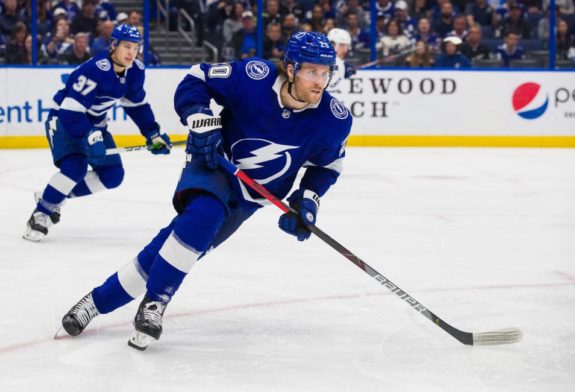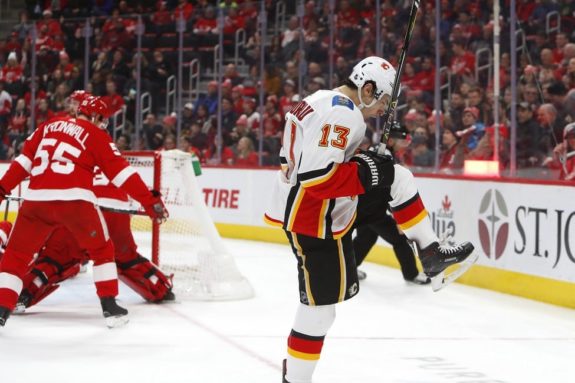It’s been 10 years since the 2011 NHL Entry Draft and it was a painful one for the Toronto Maple Leafs. Like many drafts and prospects in the past they had numerous chances to draft quality NHL players and missed the mark completely.
From missing out on Rickard Rakell to potentially landing Nikita Kucherov in the second round, there was a lot of head scratching with the decisions that then Maple Leafs general manager Brian Burke and the scouting department made. Trading up to select Tyler Biggs comes to mind. It took a while, but the Maple Leafs are in a great spot right now with the way they’re drafting and developing their prospects.
This draft could’ve sped up the rebuilding process as the Maple Leafs had nine picks in the seven rounds. Out of the nine picks from that draft, Josh Leivo is the only player who the Maple Leafs drafted that went on to play more than 200 NHL games. What’s coincidental is that the Maple Leafs have an opportunity to sign some of the players they could’ve drafted as they’re up and coming free agents.
The Maple Leafs really dropped the ball with this draft. While it’s difficult to project how these prospects would’ve panned out, they were in a prime spot to select quality NHL talent. Here are four notable players that the Maple Leafs could’ve had in the later rounds at the 2011 NHL Draft with their selection.
43rd Overall: Brandon Saad
To Maple Leafs: 2010 second-round pick (32ndoverall- Jared Knight)
To Chicago Blackhawks: 2011 second-round pick (43rd) and 2011 third-round pick (70th)
This pick originally belonged to the Calgary Flames after the Maple Leafs acquired it in a trade along with Wayne Primeau. Giving up this pick hurt the Maple Leafs big time as they already gave up their other second-round pick to the Anaheim Ducks that they used to select John Gibson.
The Blackhawks really took advantage with this pick, as Saad has had success in his career with them. He was off to a great start in his first three seasons, as he registered 27 points in his rookie season and followed that up with 47 and 52 points. He was a major addition to their roster as he helped the Blackhawks win two Stanley Cups in 2012-13 and 2014-15. He was eventually traded to the Columbus Blue Jackets, recording back-to-back 53-point seasons.

Saad found his way back on the Blackhawks after they traded Artemi Panarin to the Columbus Blue Jackets, playing three more seasons before being traded to the Colorado Avalanche for the 2020-21 season. While he only recorded 24 points, his offensive output increased in the playoffs, scoring seven goals in 10 games.
He may not be an elite player, but Saad has always served as a viable and adequate top-six forward option. Given how the Maple Leafs made the postseason in 2012-13, it was a downward decline after that. Saad would’ve been an early piece for the future and would’ve been one of many pieces to change the direction of the team. Now that he’s a pending unrestricted free agent, he could be a potential option for the Maple Leafs as a second line winger and provide some strong secondary scoring.
70th Overall: Blake Coleman
The second pick the Maple Leafs gave up in that trade with the Blackhawks was used to select Michael Paliotta. He has seen very little NHL action as he’s only played in two games with numerous stops with a number of teams in the American League.
If the Maple Leafs did their homework, they could’ve landed Blake Coleman, who was eventually selected five spots later by the New Jersey Devils. After being traded to the Tampa Bay Lightning, he won the Stanley Cup. He brings a speedy, two-way presence and an aggressive mentality that was extremely valuable to them.

Coleman has strong two-way presence with the ability to get in on the fore-check and gain possession. He’s also dangerous when it comes to the high danger area being a major factor generating chances and creating goals. In 2020-21 with at least 200 minutes played, Coleman had a high danger chances for percentage (HDGF%) of 57.87 and a high danger goals for percentage (HDGF%) of 68.75– ranking third in both categories.
Coleman would’ve already been a key depth addition to the Maple Leafs bottom-six forward group. The Maple Leafs depth was always lacking until recently. Having a player with his kind of intensity would’ve made the team more competitive and tougher to play against. He has been really effective in the past and having a solid depth piece in the system would’ve helped them out in that regard.
100th Overall: Johnny Gaudreau
This pick probably hurt the most. The Maple Leafs selected Tom Nilsson with their 100th pick and Gaudreau was selected four picks later by the Calgary Flames.

In an article by former head of European scouting for Dobber Prospects and current amateur scout for the Carolina Hurricanes Jokke Nevalainen, players from 2000-2009– most notably forwards– drafted between 91st and 120th overall have a success rate of 22% of making the NHL. That’s a low success rate for fourth round prospects of potentially making the NHL. Two drafts later, Gaudreau is one of the better success stories as a late-round pick, with the Flames striking gold with him.
In 520 games with the Flames, Gaudreau has totaled 170 goals and 324 assists. Since his rookie season in 2014-15, he ranks eighth in assists and 11thin points, becoming a big time point producer and playmaker. He also hit the 60-point mark five times and was one point away from 100 points in 2018-19, falling short of being a finalist for the Hart Trophy. While the Flames have struggled recently, Gaudreau still remains consistent with his production.
It’s very rare to find a player with high-end offensive upside in the fourth round. Who would’ve thought that the Flames would get one of the top wingers in the NHL today. While he turned out to be an offensive powerhouse, the Maple Leafs could’ve had the opportunity to have a first line winger. Again, it’s hard to gauge players in this round, but what if he worked out for the Maple Leafs?
160th Overall: Josh Manson
To Maple Leafs: 2012 sixth-round pick (157th overall- Ryan Rupert)
To Ducks: 2011 sixth-round pick (160th overall)
You know how Maple Leafs fans keep on wishing to have a steady, right-handed defenseman like Manson and how he would be an ideal trade target? Well, they literally could’ve drafted him and this saga of looking to acquire the defenseman wouldn’t even be a topic of conversation.

Manson is the ideal top-four, shut down defenseman and has been very successful in that regard for the Ducks. In 408 games with the Ducks, he has tallied 104 points and has also logged a lot of minutes on the blue line. More so on the penalty kill, where he averaged 2:28 since his rookie season in 2014-15. During a time when the Maple Leafs were looking to draft and develop quality defensemen, Manson would’ve been one of those players that could’ve been a difference maker on the back end.
He would’ve been great in a second or third pairing role, being smart defensively in his own end, while also bringing a physical element. Burke was big on “truculence and belligerence” and Manson would’ve been the poster boy for that kind of mentality that Burke wanted for this Maple Leafs team.
While the Maple Leafs currently have a player like Jake Muzzin, imagine having Manson provide some stability on the blue line early on for them. Even if the Maple Leafs still acquired Muzzin, having those two as a pairing would be a nightmare for the opposition given their aggressive style with ability to chip in offensively. He would’ve been a great asset as a top-four defenseman.
There’s no guarantee that these picks would’ve panned out, but if they did project the same way as if the Maple Leafs selected them, they lost out on some potential game-changing talent– showing how poor their scouting department was. If they drafted the way they did in 2011 like they do now, Maple Leafs would be in a much better spot instead of making poor decisions with picks and selections.
Statistics from Natural Stat Trick and NHL.com. Draft information from Cap Friendly.